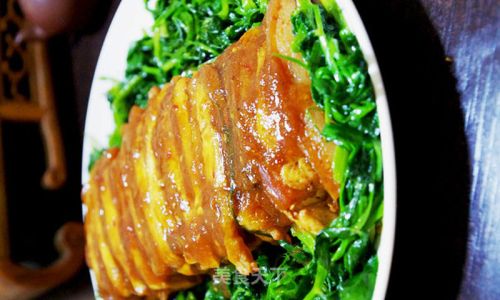Steaming meat is a cooking technique that has been cherished across various cultures for centuries. It preserves the natural flavors and juices of the meat, resulting in tender, moist, and flavorful dishes. Whether you’re a seasoned chef or a home cook looking to elevate your culinary skills, learning how to steam meat simply and deliciously can significantly enhance your meal preparations. In this comprehensive guide, we’ll explore the basics of steaming meat, provide step-by-step instructions, share tips for achieving perfect results, and offer a few delicious recipes to get you started.
Understanding the Basics of Steaming Meat
Steaming is a cooking method that involves using the heat from boiling water to cook food in a covered pot or steamer. The food is placed above the boiling water, but it does not come into direct contact with the water. This method is particularly suitable for meats because it allows them to cook gently and evenly, retaining their moisture and nutrients.
Key Benefits of Steaming Meat:
- Preservation of Flavors and Nutrients: Steaming preserves the natural juices and flavors of the meat, ensuring that the final dish is nutritious and delicious.
- Tender Texture: The gentle heat of steaming tenderizes the meat, making it soft and easy to chew.
- Healthier Option: Steaming is a healthier cooking method as it does not require the use of oil or additional fats.
- Versatility: You can steam a variety of meats, including chicken, pork, beef, and fish, and pair them with a wide range of seasonings and flavors.
Equipment Needed for Steaming Meat
Before you begin, ensure you have the necessary equipment to steam meat effectively:

- Steamer Basket or Rack: This is a metal or bamboo rack that fits inside a pot, allowing the meat to be placed above the boiling water.
- Pot with Lid: A large, heavy-bottomed pot with a tight-fitting lid is essential to trap the steam and maintain an even cooking temperature.
- Tongs or Heat-Resistant Gloves: These will help you handle the hot meat without burning yourself.
- Measuring Cups and Spoons: For accurate seasoning and marinade measurements.
- Sharp Knife: For slicing the meat into even pieces, ensuring uniform cooking.
- Marinating Bowl: A large bowl for marinating the meat if desired.
Choosing the Right Meat for Steaming
Not all cuts of meat are suitable for steaming. Here are some guidelines to help you choose the best options:
- Chicken: Whole chickens, chicken breasts, wings, and thighs are all great choices for steaming. Chicken pieces should be boneless or bone-in but not too thick to ensure even cooking.
- Pork: Tender cuts like pork tenderloin, pork shoulder, and pork belly are ideal for steaming. Avoid tough cuts that require long, slow cooking methods.
- Beef: Thin slices of beef, such as flank steak or sirloin, work well for steaming. Avoid thick cuts that may become tough and overcooked.
- Fish: Fillets of firm-fleshed fish like salmon, halibut, and snapper are perfect for steaming. They cook quickly and retain their moisture.
Preparing the Meat for Steaming
Proper preparation is key to achieving delicious steamed meat. Here are some steps to follow:
- Trimming and Cutting: Trim any excess fat from the meat. Cut larger pieces into more manageable sizes to ensure even cooking.
- Marinating (Optional): Marinating the meat can add extra flavor. Use a combination of soy sauce, ginger, garlic, sesame oil, and other spices to create a marinade. Let the meat sit in the marinade for at least 30 minutes, or preferably overnight for maximum flavor absorption.
- Seasoning: Season the meat with salt, pepper, and any other desired spices. This can be done before or after marinating.
- Resting: Allow the meat to rest at room temperature for about 15-30 minutes before steaming. This helps it cook more evenly.
Step-by-Step Guide to Steaming Meat
Now that you have your meat prepared, let’s walk through the steaming process step-by-step:

- Fill the Pot: Add enough water to the pot to reach just below the bottom of the steamer basket or rack. Bring the water to a rolling boil over high heat.
- Prepare the Steamer: Place the steamer basket or rack inside the pot. Make sure it is securely positioned and not touching the boiling water.
- Arrange the Meat: Carefully place the prepared meat on the steamer basket or rack, spacing the pieces out so they are not overcrowded. This allows steam to circulate evenly around each piece.
- Cover and Steam: Quickly cover the pot with the lid to trap the steam. Reduce the heat to medium-high to maintain a steady steam without boiling over.
- Cooking Time: The cooking time will depend on the type and thickness of the meat. Here are some general guidelines:
- Chicken breasts: 15-20 minutes
- Chicken wings or thighs: 25-30 minutes
- Pork tenderloin: 25-35 minutes
- Beef slices: 10-15 minutes
- Fish fillets: 8-12 minutes
- Checking for Doneness: Use a meat thermometer to check the internal temperature of the meat. For example, chicken should reach 165°F (75°C), pork should be 145°F (63°C), and beef should be cooked to your preferred doneness (medium-rare is around 130°F or 55°C). Alternatively, you can insert a fork or toothpick into the thickest part of the meat; if the juices run clear, the meat is likely done.
- Resting the Meat: Once cooked, remove the meat from the steamer and let it rest for a few minutes. This allows the juices to redistribute, making the meat even more tender and flavorful.
Tips for Perfect Steamed Meat
- Use Fresh Ingredients: Always start with fresh, high-quality meat for the best results.
- Don’t Overcrowd the Steamer: Ensure there is enough space between the pieces of meat to allow steam to circulate freely.
- Monitor the Water Level: Keep an eye on the water level in the pot. If it gets too low, add more boiling water to avoid burning the bottom of the pot.
- Adjust the Heat: Maintain a steady, moderate heat to avoid boiling over and losing too much steam.
- Experiment with Seasonings: Don’t be afraid to experiment with different marinades and seasonings to find flavors you love.
- Use a Food Thermometer: A meat thermometer is the most reliable way to check for doneness, ensuring your meat is cooked to perfection.
Delicious Steamed Meat Recipes
Now that you know the basics, let’s dive into some delicious recipes to inspire your next meal:
Steamed Chicken with Ginger and Scallions
Ingredients:
- 2 boneless, skinless chicken breasts
- 3 tablespoons soy sauce
- 1 tablespoon rice vinegar
- 1 tablespoon sesame oil
- 2 cloves garlic, minced
- 1-inch piece of fresh ginger, sliced into thin matchsticks
- 2 scallions, sliced thinly
- Salt and pepper to taste
Instructions:

- In a large bowl, combine soy sauce, rice vinegar, sesame oil, garlic, ginger, and scallions. Add the chicken breasts, ensuring they are well-coated with the marinade. Let marinate for at least 30 minutes.
- Prepare the steamer as described above. Place the marinated chicken breasts on the steamer basket.
- Steam for 15-20 minutes, or until the internal temperature reaches 165°F (75°C).
- Remove the chicken from the steamer and let it rest for 5 minutes. Slice and serve garnished with additional scallions and a drizzle of soy sauce if desired.
Steamed Pork Tenderloin with Hoisin Sauce
Ingredients:
- 1 pork tenderloin (about 1 pound)
- 1/4 cup hoisin sauce
- 2 tablespoons soy sauce
- 1 tablespoon honey
- 1 clove garlic, minced
- 1 teaspoon sesame oil
- Salt and pepper to taste
- Steamed jasmine rice for serving
Instructions:
- In a small bowl, whisk together hoisin sauce, soy sauce, honey, garlic, and sesame oil. Season with salt and pepper.
- Place the pork tenderloin in a large, resealable plastic bag or a shallow dish. Pour the hoisin mixture over the pork, sealing the bag or covering the dish, and marinate for at least 1 hour, or preferably overnight.
- Prepare the steamer as described above. Remove the pork from the marinade, letting excess drip off. Place the pork tenderloin on the steamer basket.
- Steam for 25-35 minutes, or until the internal temperature reaches 145°F (63






0 comments